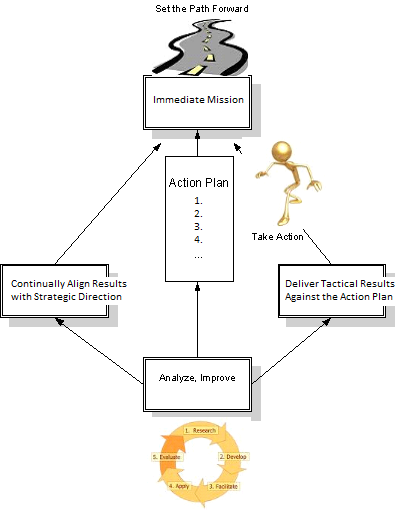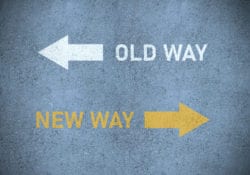Strong Point’s Leadership Rule #20: Face the Pressure
The whole point of learning to face pressure as a leader is to ensure you don’t choke and land in the lost or lukewarm pile of your most trusted allies and advisors when the big moment of an industry speech, or a product launch, or a technology fix comes. It’s an accomplishment if you can give the speech to your mirror, or demonstrate the new code in the innovation lab, or replicate and solve the data breach at your desk. What matters, though, is that you can still give the speech when the teleprompter fails, and can demonstrate the technology after the software environment hangs, restarts and then resets your pre-planned configuration, or solve the data breach when it occurs during a mission-critical customer delivery. Yes, progress occurs in your environment, but it manifests more concretely in the universe, in the sphere of your operating environment, your customer base, or industry forum. The question to be answered regarding pressure is: ”Can you still perform when you’ve experienced a significant setback and still hold your focus steady when some form of chaos knocks you off center?”
 | In the realm of Leadership, buckling under pressure means cheating a customer, throwing a colleague under the bus, or keeping silent when individuals or teams are erring real-time, and you practically and tactically have the chance to intervene and set things right, and you don’t. Knowingly or unknowingly, we all do it, in some form or another. We all fall short of the goal of maintaining our moral integrity as a human being. Call buckling an error of omission, an evacuation of duty, silence of the complicit bystander, or fear of the wolf pack that is in your sphere of influence, or what other image you can conjure up; it is, fundamentally, a lack of leadership that bends our knees and spirits into a buckle. |
In my career, I’ve been witness to, and part of an executive team that worked to overcharge (cheat) a top customer to the tune of 800,000 dollars. The purpose of this action was to reach a sales goal so the team could and get a free-for-all family vacation as a reward. When I refused to comply with the plan and voiced my discontent, I was fired. I’ve seen team members ousted (thrown under the bus) from projects for asking too many questions, exuding an offensive smell, being too detailed in documentation, struggling with collaboration technology and being less than confident while speaking to a group. In all of these cases I felt shame. I still feel shame, for keeping silent, when I remember that I have been part of a group of people and a set of behaviors that, paraphrasing Dr. Martin Luther King, judges people for the “color of their skin, (or hair, nails, body odor or briefcase),” rather than the content of their character (or the quality of their work).” I am still so often frustrated by the pettiness of group dynamics in the workplace and the life-altering impact that emotional immaturity has on productivity, people’s careers and the solvency of a company when darker angels take over an operating environment. I can recall my complicit silence in the midst of professional injustice, too many times to count. An executive recruiter and colleague of mine suggests that we, at these moments, should say to ourselves and others about handling pressure more effectively, “I am better than I was 3 years ago… and 3 years from now, I will be better than I am today.” This can only ring true, of course, if we as leaders, remain committed to continuous Leadership Development.
Often, the first sign that you’re buckling under pressure is a perceptible onslaught of “D‘s.” Disillusionment, Depression, Discouragement, to name only three, set in. I am sure you can offer a few more “D’s” to the list. In Strong Point’s Leadership Rule #16: Develop Break-the-Mood Strategies and Tools, I work to remind us all, and myself, that emotion is a contagion.
A March 2011 New York Times article called The Problem With Pointing Fingers, written by Eilene Zimmerman points to a quote by Alina Tugend in her book Better By Mistake. The article states that:
Research shows that people in the workplace tend to copy blaming as a behavior, whether consciously or unconsciously, thus perpetuating the problem, Ms. Tugend says. “Conversely,” she adds, “when people see others taking responsibility for their mistakes or failures, they also copy that, creating a better overall work environment.”
I can hear my husband’s voice in my head as I write this, saying ,“Think about something else, Sharon.” This is what he often says to me when I am in a downward and negative spiral of emotions. All he’s doing is highlighting an essential combatant in the fight against buckling under pressure: challenging and changing self-defeating self-talk. He’s the first witness and recipient of the presence of my “D‘s” and as soon as he starts to notice and call-out my buckling, I add another “D” to my list: Disgust! I become disgusted with him and myself. This, of course, is an indicator that “I’m in it,“ and entirely in the throes of a buckling moment.
Buckling under pressure is also more profound than just breaking or battening down emotions. Maintaining integrity and a positive attitude are only possible when actions are anchored by character. One has to HAVE integrity to maintain it. No matter how many times I’ve heard the expression “Hire for Character and Train for Skill,” I can recall a hundred more instances where the lack of character in my colleagues has burned through the heat shield of my faith in humanity and left me mumbling to myself “Are we even capable of caring for each other?” Too few companies care about, cultivate, and correct for elements of character.
In Strong Point’s Leadership Rule #9: Work with Deep People, I cite the work of Christian Pastor, Gordon MacDonald, in his book called, Going Deep, Becoming a Person of Influence. I continue to strive toward achieving and strengthening his 12 character traits of depth in myself. After years of working to check myself against his dashboard of deep character, I can, on any given day, probably only name 10 of the 12 indicators of deep character. My point is that building character is a goal that requires continuous effort, and can never really be accomplished. Building character is like building strength; the activity itself can trigger self-loathing and force a hard stop. It’s difficult, murky, and uneven work that sometimes causes extreme exposure of self.
The opening line of a Harvard Business Review Article called Managing for Organizational Integrity, and written by Lynn S. Paine in the March-April 1994, highlights the fact that professional leaders do not often think that character should be part of organizational leadership. Take note of the collective thought expressed 25 years ago. I find evidence of these thoughts through Strong Point’s work today:
“Many managers think of ethics (insert character) as a question of personal scruples, a confidential matter between individuals and their consciences. These executives are quick to describe any wrongdoing as an isolated incident, the work of a rogue employee. The thought that the company could bear any responsibility for an individual’s misdeeds never enters their minds. Ethics, after all, has nothing to do with management.”
The article goes on to say that professional managers and leaders exhibiting this error of judgment, rarely reflect an intention to harm or deceive. More often, the piece goes on to say, is the case that business people and teams are simply insensitive or indifferent to ethical considerations. At the foundation of this lack of character, Lynn points out, is the absence of a declared and effective organizational structure and system that supports it.
The simple remedy for inoculating yourself and other leaders on your team from breaking-down under pressure is first define and then build character.
How many of these statistics about stress, named by an office vibe blog, resonate in your operating culture?
- 87% of workers feel they are emotionally disconnected from their workplaces and are less likely to be productive.
- 77% of people regularly experience physical symptoms caused by stress.
- 76% of people say the two primary sources of stress are money and work.
- 73% of people regularly experience psychological symptoms caused by stress.
- 60% of 26,000 people surveyed said they are so unhappy with jobs that they would prefer to choose a new career.
- 54% say stress causes them to fight with people they love.
- 48% feel that their stress has increased over the last five years.
- 48% of people report lying awake at night due to stress.
- 33% of people feel like they are living with extreme stress.
- Unhappy workers are 10% less productive than happy workers.
*Source: 11 Scary Statistics About Stress At Work
I’m not a fan of spiritual bifurcation or emotional compartmentalization. I’m a fan of wholeness. Whole people are healthy people. Healthy people are strong people. Strong people build strong teams and strong businesses. Building character begins with defining it for yourself and then institutionalizing it as a way of working. Consider conducting a character audit, measuring truthfulness, or counting caring actions in the operating environment. Pick five core character traits that are most important to you to build a system that teaches, measures, and works to continually strengthen these character traits.
If character at work is undefined, or under attack, take a block and tackle approach to facing pressure. Building strength in the face of pressure is a whole person, mind, body, spirit endeavor.
Some other critical points that Lynne S. Paine mentions in her 1994 HBR article are:
- Leaders who fail to institute systems that facilitate ethical conduct share responsibility with those who conceive, execute, and knowingly benefit from corporate misdeeds.
- Leaders must acknowledge their role in shaping organizational ethics and seize this opportunity to create a climate that can strengthen the relationships and reputations on which their companies’ success depends.
- Executives who ignore ethics (or aspects of character) run the risk of incurring personal and corporate liability in today’s increasingly tough legal environment.
One of my favorite mentors, Deepak Chopra, advises doing these 5 things to face pressure and maintain strength in the face of stress. I’ve added my thoughts to and experiences with using these tools.
| Strategies | Images | Thoughts |
|---|---|---|
BreatheThis is especially helpful when you find yourself stuck in a stressful environment. Studies have found that the gentle rising and falling of the breath can stimulate parts of the brain responsible for creating a sense of calm tranquility. If you’re in a situation where you’re unable to step away, do your best to ignore the surrounding chaos and just focus on your breathing. |  | When I’m in a group, I quietly and slowly inhale and exhale. When I’m at my desk by myself, I alternate between 10 quick in-and-out breaths, followed by 10 deep inhale/exhale breaths. It only takes 3 or 4 repetitions of these breathing exercises before trapped emotions begin to leave, and a sense of calm returns. |
Spend time in natureSpending time in nature can help relieve anxiety and improve mood. One study found that it only takes 20 to 30 minutes of walking outside to alleviate daily stress. Even on days when you already feel calm and relaxed, it’s important to take breaks and expose yourself to nature. |  | On days the weather permits, I target a meeting that can be conducted as a walking meeting. I capture notes from the meeting by getting approval from my colleague to record the conversation and my action items. Tools like Dragon Anywhere by Nuance and List Note (Android), let you dictate, edit, and format documents while you are walking!! |
ExerciseWe hear this advice so often because there is so much truth to it! A Harvard study found that daily exercise may prolong your life by 10 years or more. If you can’t fit 15 to 30 minutes of exercise into your day, make it a point to get up from your chair and walk around or do some stretches in the office. |  | Get and use a standing desk! Bring Stretch Bands and hand weights to work and keep them under or around your desk. Save 10 mins each hour to move, stretch, and strengthen your body. |
MeditateMeditation is one of the most effective ways to combat stress. Not only can daily meditation help regulate stress, but several studies have also found that it can prevent sickness in the long-run. Other benefits include helping to lower blood pressure and reducing age-related memory loss. Dr. Chopra recommends at least 15 to 20 minutes of meditation, preferably twice a day. |  | I usually schedule a 20-minute break and go out to my car and meditate. I sometimes notice others doing the same thing!! I struggled so long to learn how to meditate effectively. Russell Simmons book called Success through Stillness changed it all for me. He does teach you how to make meditation simple! |
Prioritize important peopleIt’s essential to maintain relationships with the people who are important to you — not through email or text, but a real connection either in person or over the phone. Studies have proven that building close connections can strengthen your sense of belonging, increase self-confidence, and make you much happier in life. |  | Sometimes a quick phone call with a loved one, a warm text exchange, or silly picture exchange breaks a stressful mood and reminds you WHOM you are working for and the purpose behind your work. |
Of course, a key pressure at work is to get things done. Execution performance and the ability to deliver results is a key attribute and indicator of successful leadership. Yet, as a Michael J. Mauboussin, reminds us in his October 2012 Harvard Business Review (HBR) article entitled The True Measure of Success, leaders are often overconfident in their abilities, and this overconfidence can lead to serious mistakes that increase the pressure to produce, not decrease it.
“People’s deep confidence in their judgments and abilities is often at odds with reality.”
 | Strong Point is a business advisory services company focused on helping companies design and execute transformations to advance capabilities and stimulate growth. In all of our engagements, we follow a simple 4-step scientific method to guide our work: 1. Understand the Mission 2. Conduct/Complete a detailed discovery process of the operating environment 3. Define Current State and Desired Future State in the voice of key customer stakeholders 4. Create an Action Plan and define the skills/ resources needed to execute the plan(s) to bridge the gap between Current State and Future State Using this method as a daily map to plan, strategize, and execute against goals can sometimes help leaders and teams focus on immediate goals in the face of intense pressure. |
Whatever your strategies are to handle constant stress, they should be as continuous and multi-faceted as the stressors acting against your leadership capability and strength.
I am an INFJ according to the Myers-Brigg Temperament Indicator. The Top 5 Character Traits of a leader with my personality are: Conscientious, Responsible, Determined, Nurturing, and Intuitive. According to the DISC Profile, I am mostly disciplined (D) and steadfast (S) in my approach to life and work. When I feel myself about to buckle under pressure, and I’m approaching my tolerance and ability for dealing with it, I work to return to my core character, refresh my mind, body and spirit and keep my head down and focused on daily deliverables. I also work to lead by example.
Strong Point’s Leadership Rule #20:Face the Pressure



